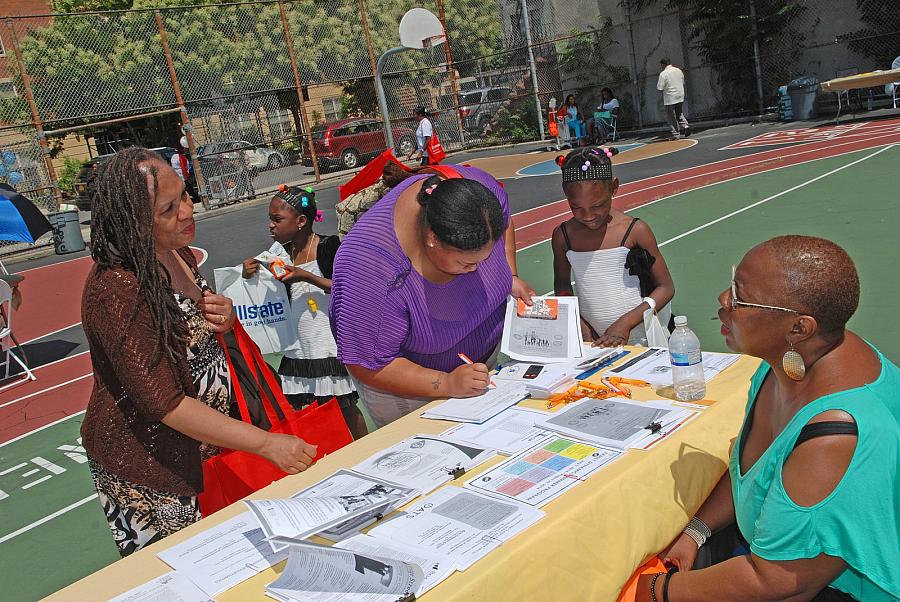Why preventive health push requires more boots on the ground

Health fairs and community events can be effective places to reach people.
Before journalism, I worked as a biologist in science laboratories. I had many reasons for leaving science, but one was coming to terms with how I wanted to contribute to the world. Medical research has come up with remarkable treatments. But they are often more about intervention than prevention. I began to wonder: Would we, as a society, do better to invest in public health, to address problems before they began?
But of course it’s not so simple. Public health faces it’s own set of challenges. Money is certainly one of them. But with the Affordable Care Act (ACA), that’s less true than it used to be. The ACA requires private insurers to cover preventive services such as vaccinations, cancer screenings and blood pressure tests without any co-pays or deductibles.
But whether that’s enough to boost the rate of preventive screenings remains to be seen. Of great concern are people who are over age 50, especially those who belong to racial and ethnic minorities. For example, only 52 percent of non-Latino African-Americans and 58 percent of Latinos ages 65 and older receive a flu vaccine. The federal target for that age group is 90 percent.
The ACA will cover anyone who receives preventive care at the doctor’s office. But a new policy brief (pdf) from the UCLA Center for Health Policy Research suggests that public health programs must expand their reach, if they want to do more than inch their way to federal standards. The report says community-based organizations can support that effort.
The brief, which was funded by the Centers for Disease Control, evaluated organizations that offered preventive services in settings outside of the doctor’s office.
“We wanted to know, is it possible to move the needle on getting older adults screened regularly, more toward national guidelines?” said Steven Wallace, chair of the Department of Community Health Sciences at the UCLA School of Public Health.
The question is: How do you reach people who don’t routinely seek care? Doctors can advise patients about appropriate screening services, said Wallace, one of three authors of the study. But not everyone goes to the doctor or listens to their doctor’s advice.
The authors looked for success stories in preventive care offered through community outreach. They evaluated hundreds of published reports and literature to identify programs that succeeded in delivering care to populations that would not have otherwise received it.
A list of 20 diverse groups suggests that many different approaches can work in reaching underserved populations, including showing up at community health fairs, faith-based motivation, screening older adults during emergency service calls, and promoting additional tests at flu vaccine clinics.
One take-home message from the study is that it has to be easy, Wallace said. Screenings that take place within the community, take-home test kits and vouchers for cabs can help. It’s also good to catch people at places where they are already thinking about their health, such as flu vaccine clinics and gyms, he said.
Cultural competency and outreach can also make a difference. A Vietnamese outreach worker may have more success conveying the importance of a cancer screening to members of the same community. They can relate on a more personal level.
“You need to reach people where they are, culturally, linguistically, geographically – ideally all the above,” Wallace said.
The UCLA study makes it clear that community-based efforts can work, he said, but the question is how to make these efforts sustainable for the long term. Many of the community efforts recognized by the UCLA authors were one-time demonstration projects.
Which brings us back to how the federal government spends its money. Right now, community-based organizations must be federally approved providers to be federally reimbursed. The YWCA, one organization recognized by the UCLA group, set up a centralized billing system through its national office. But many smaller organizations don’t have the funds or staff to manage that.
Wallace points the Affordable Care Act’s Prevention and Public Health Fund as one pot of money that could help. The ACA health law originally funded $2 billion annually for the fund. But Congress has diverted large chunks of money to other health care activities, including building the federal exchange, rather than prevention. And some in Congress would like to do away with it altogether.
The UCLA policy brief suggests that getting out into the community works to make preventive services more accessible. Those services can help to catch disease early and keep people healthy to ultimately saves lives. Now we just need to find a better way to finance those efforts.
Photo by Knockout Obesity via Flickr.

